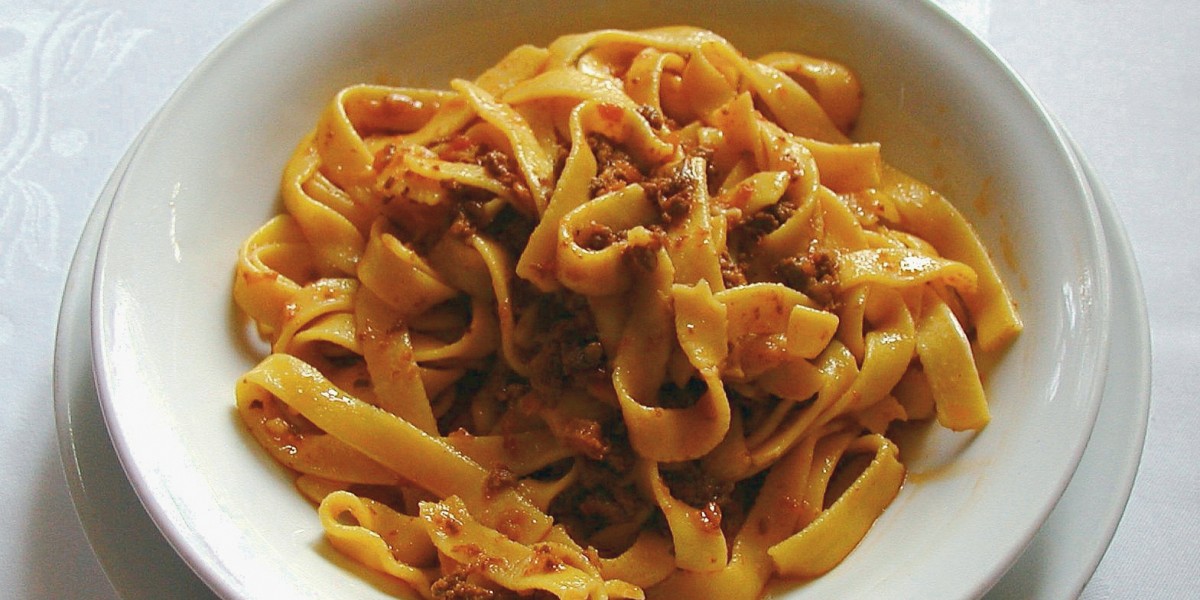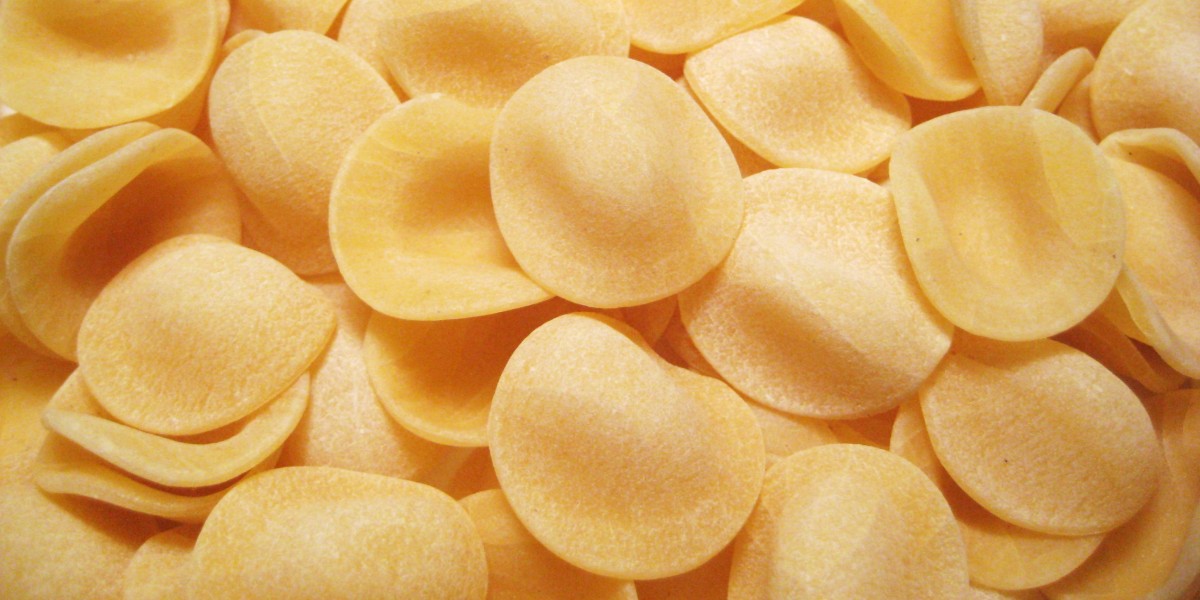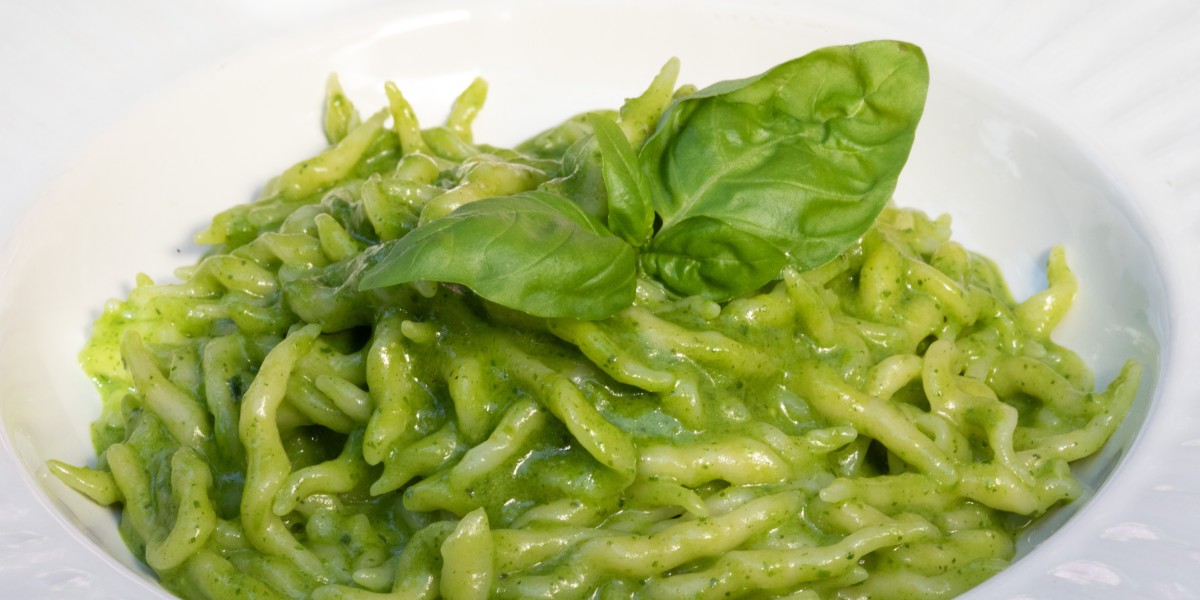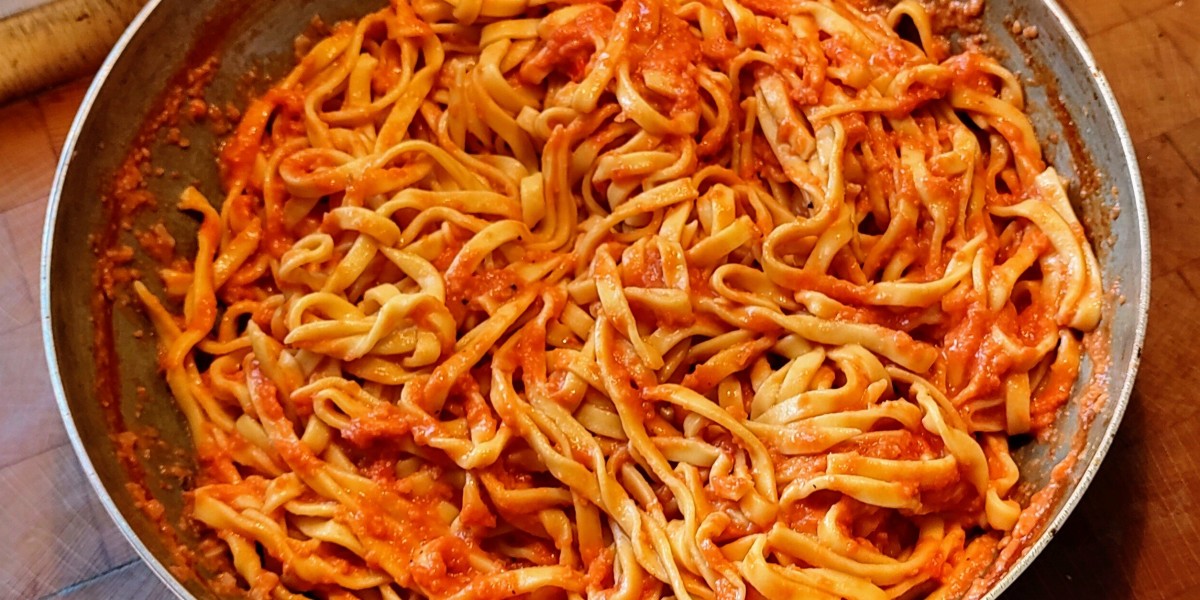
Italy and pasta go hand in hand—it's not a cliché, it's just the simple truth. No matter where you are in the world, chances are you’ve sat down to a plate of spaghetti or tucked into a bowl of penne at some point, but nothing really compares to having pasta in its homeland.
- What makes Italian pasta dishes regional?
- 10 all-time favourite pasta dishes
- Tagliatelle al ragù (Emilia-Romagna)
- Spaghetti alla carbonara (Lazio/Rome)
- Lasagne alla Bolognese (Emilia-Romagna)
- Orecchiette con cime di rapa (Puglia)
- Cacio e pepe (Lazio/Rome)
- Pasta alla Norma (Sicily)
- Trofie al pesto (Liguria)
- Pappardelle al cinghiale (Tuscany)
- Pici all’aglione (Tuscany)
- Pasta e fagioli (Veneto & central Italy)
- Pasta traditions and eating habits
What makes Italian pasta dishes regional?
What makes Italian pasta dishes so unique is how each region takes the same basic ingredients—flour, eggs or water, and maybe a pinch of salt—and transforms them into something entirely their own. From the shape of the pasta to the kind of sauce ladled on top, it all comes down to local traditions, the landscape, and what’s in season.
The pasta dishes in Northern Italy are all about rich, creamy sauces and silky egg pastas. Typical southern Italian pasta specialities often feature robust tomato bases, seafood, and dried pasta shapes. And in places like Rome and around Tuscany, you'll find the quintessential indulgent Central Italian pasta style, sprinkled with truffles and pecorino.
10 all-time favourite pasta dishes
Some Italian pasta dishes seem to have reached cult status—shared at family gatherings, dinner tables and trattorie up and down the country. Here’s a mix of all-time favourites: some are household names for good reason, while others are local legends that deserve to be far more famous outside their home turf.
Tagliatelle al ragù (Emilia-Romagna)
Best known as the “real” Bolognese, this classic from Bologna features fresh, eggy tagliatelle tangled up with a meaty, slow-cooked sauce that’s rich but never heavy.

Spaghetti alla carbonara (Lazio/Rome)
A creamy Roman staple—though you won't find a drop of actual cream—carbonara relies on eggs, pecorino romano, crispy guanciale and black pepper. It's quick, satisfying, and, when made properly, feels far more indulgent than its simple ingredients let on. They say Roman charcoal workers, or carbonari, made the dish over open flames, using ingredients that travelled well and kept them fuelled during long days.

Lasagne alla Bolognese (Emilia-Romagna)
Layers of silky pasta, meaty ragù, creamy béchamel and a generous topping of Parmigiano-Reggiano, baked until bubbling. The comfort food that’s taken on a life of its own internationally, though few versions match the real thing you’ll get in Bologna’s neighbourhood trattoria.
Orecchiette con cime di rapa (Puglia)
These “little ears” pasta shapes perfectly scoop up a slightly bitter mix of broccoli rabe, garlic, anchovies and a little chilli—showcasing hearty peasant cooking from southern Italy, especially in and around Bari.

Cacio e pepe (Lazio/Rome)
Famous for needing just three things—pasta, pecorino, and black pepper—this Roman icon is all about skill and timing, resulting in a thick, creamy coating with a fiery peppery kick. This humble Roman classic comes from shepherds who could easily carry the ingredients. You’ll see it on menus everywhere in Rome, from backstreet bars to elegant dining rooms.
Pasta alla Norma (Sicily)
A sunshine dish from Catania - one of Sicily's ancient port cities - with short pasta, a punchy tomato sauce, fried aubergines, fresh basil and salted ricotta. This dish was named in honour of Vincenzo Bellini’s opera “Norma” after a Sicilian playwright declared it a masterpiece worthy of the great composer. Simple, summery and a brilliant vegetarian option with plenty of personality.

Trofie al pesto (Liguria)
Twisted trofie noodles, a Ligurian speciality, are at their best lathered in just-made basil pesto, pine nuts and local cheese. The intense green sauce speaks of summer on the Italian Riviera, and it’s worth seeking out in Genoa or seaside villages.

Pappardelle al cinghiale (Tuscany)
Broad ribbons of pasta tossed with a rich, wine-braised wild boar ragù—a dish that captures the spirit of rural Tuscany, particularly in the forests and hill towns around Siena and Montalcino.
Pici all’aglione (Tuscany)
Big, hand-rolled noodles paired with a gentle, garlicky tomato sauce that stars local aglione garlic. It’s rustic, robust, and found on menus across southern Tuscany’s Val d’Orcia.

Pasta e fagioli (Veneto & central Italy)
A true taste of the Italian home kitchen: hearty bean soup thickened with bits of pasta, vegetables and sometimes a little pancetta. Once considered “poor man’s food,” this dish was a staple in rural kitchens, with each village adding its own twist to make the best of whatever was on hand. It’s all about warmth and comfort.
Pasta traditions and eating habits
There’s something almost sacred about pasta in Italy—it’s not just a meal, but a marker of time, place and tradition. Pasta makes an appearance on most Italian tables several times a week, often bringing friends and family together around simple, generous plates.

Dos and don’ts when eating pasta in Italy
Don’t ask for cheese on seafood pasta
Cheese and seafood rarely mix at an Italian table, as it’s believed the cheese overwhelms the delicate flavours of the fish or shellfish.
Do match the sauce to the right pasta shape
Every shape has a reason—tubes like rigatoni hold chunky sauces, while long, thin spaghetti is paired with lighter, oil-based condiments.
Don’t cut your spaghetti
Twirl your long pasta with a fork (sometimes against the side of your plate), but never chop it up or ask for a spoon.
Do serve pasta “al dente”
Pasta should have a bit of bite left—the locals aren’t keen on anything limp or mushy.
Don’t order pasta as a side dish
For Italians, pasta is its own course—usually served as a primo (first course)—not something to have alongside meat or fish.
Do keep it simple when it comes to toppings
Extra chilli flakes, elaborate sauces, or a sprinkle of parmesan on everything often raises eyebrows.
Don’t drown your pasta in sauce
Sauce should lightly coat the pasta rather than take over the plate.
Do finish your plate
Leaving pasta behind is a rare sight in Italy and can be seen as a sign that you didn’t enjoy it, so only take as much as you’re happy to eat.
